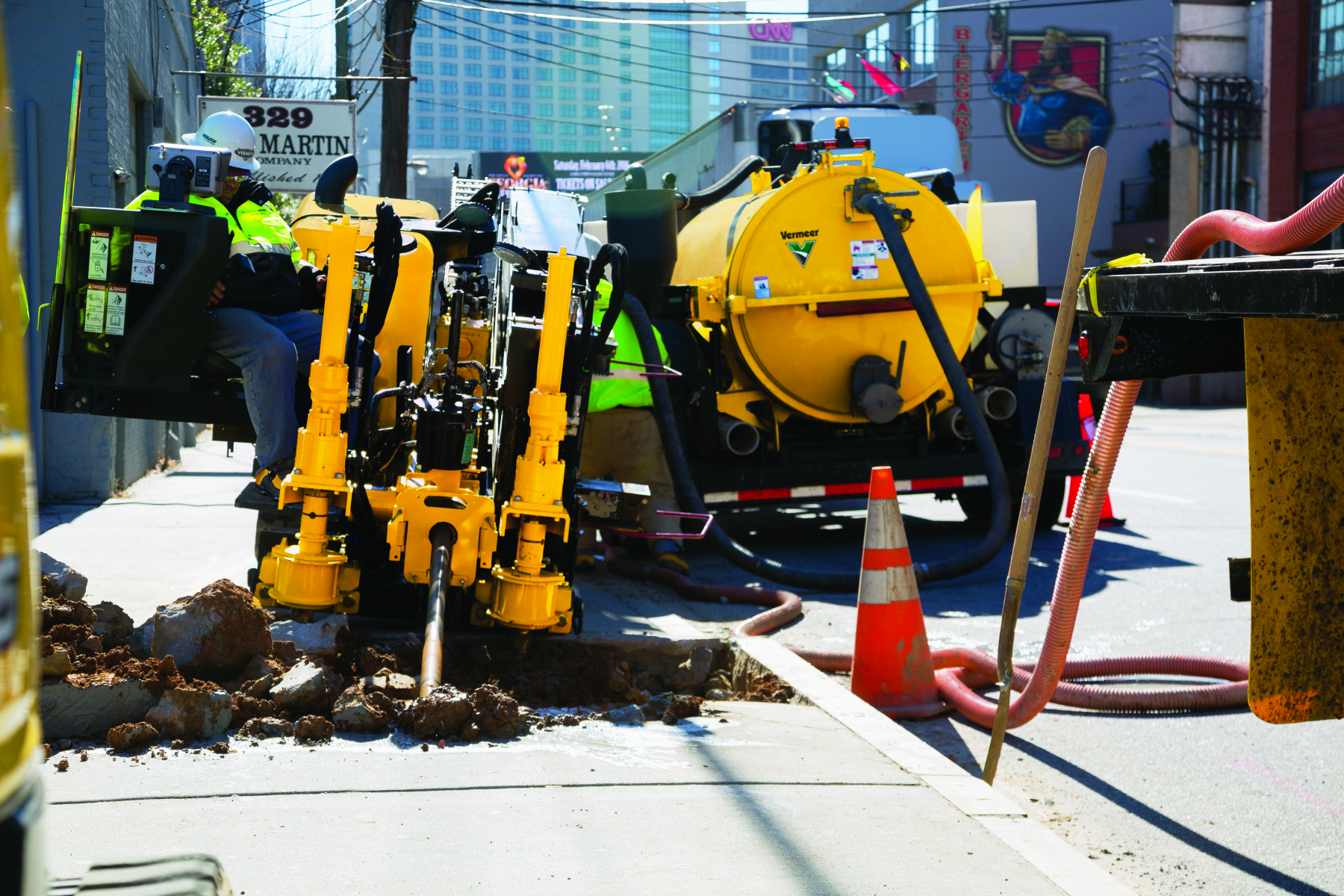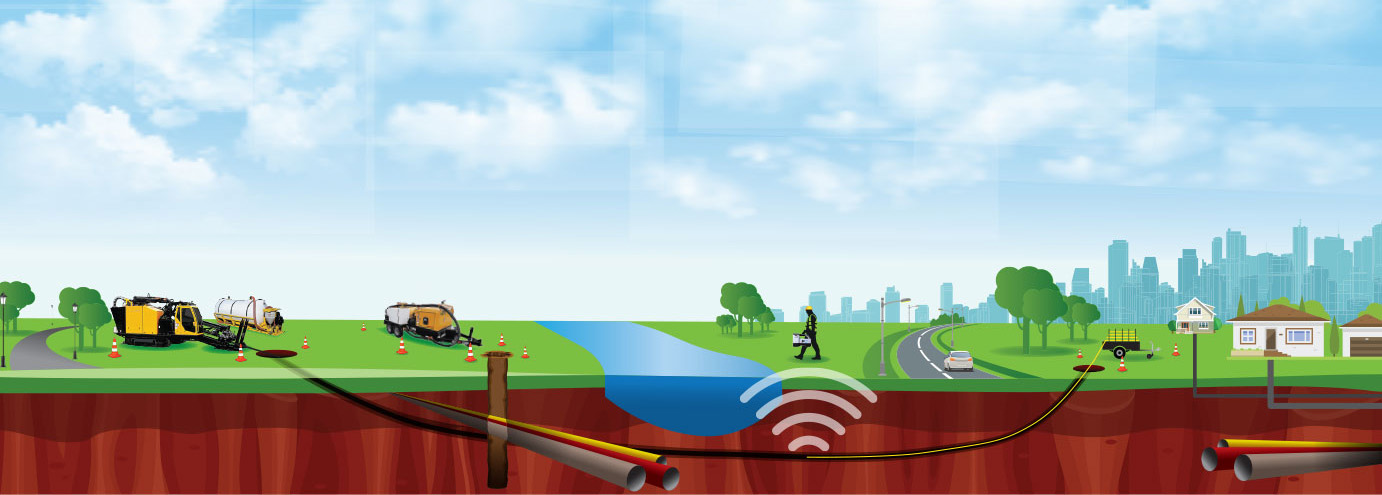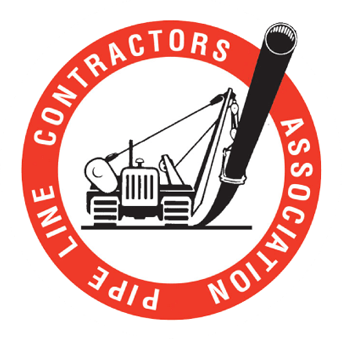
The Benefits of Trenchless
There are many benefits to using trenchless installation equipment, including but not limited to:
- Reduced property and traffic disturbance
- Shorter installation timelines
- Less overturned ground
- Minimal yard restoration
- Less risk of utilities intersecting

Trenchless Utility Installation
Technology and Fluid Basics
Trenchless installation equipment is used to tunnel underground and install utilities with minimal ground disturbance. Trenchless installation is a proven method that has existed for over half a century. It is environmentally friendly and offers a lower carbon footprint than other installation methods. It also produces less noise pollution.

Horizontal Directional Drilling
Electronics
Utility locating should be done prior to any installation. Existing utilities are located and exposed to avoid any intersecting. During the boring processes, advanced tracking technology sends data informing the operator where the machine is underground.
As our country’s underground infrastructure needs continue to grow at a rapid pace, the incidence of underground strikes will continue to increase. HDD jobsites will become more and more crowded with crisscrossing lines and HDD crews will become more and more rushed due the demands of contractors, utilities, municipalities and the needs of consumers as a whole. Without a concentrated effort to improve HDD drilling practices, we cannot logically expect an improvement in jobsite safety or a decrease in the cost of damages on a national scale. Technology-based, pre-bore planning is a basic step that could have a substantial impact for the industry. By making such a solution widely available, we believe we can encourage adoption and change behavior for the betterment of all involved.
Fluid Basics
Boring fluid is used while the equipment tunnels under the ground. It helps stabilize the installation path, lubricate and cool the ground-engaging tooling to help reduce any environmental impact. It is designed and selected to be safe, effective and match the ground condition it is being used in. This fluid is made up of 97 percent water. The other 3 percent of additives is derived from common, earthly elements, such as: bentonite, starch, soap, vegetable oil, cotton seed linters, balsa wood and soda ash. Bentonite is one of the most common additives used in boring fluid. Bentonite is used in every day household items, including: kitty litter, cosmetics, chocolate, paint and pond construction.
Damage Prevention
Damage prevention and safety are vital to the success of Horizontal Directional Drilling (HDD) jobsite and the industry as a whole.
Resources
NASTT Training
NASTT offers multiple in-depth, high quality courses each year in cities throughout North America covering targeted trenchless topics – CIPP, HDD, pipe bursting, laterals and new installation methods. You will find that our course content is of the highest quality as the material is thoroughly peer-reviewed for consensus-based information and non-commercialism. We often hear from attendees how pleased they are with the high-level of information and instruction offered by our experienced course instructors. We continually strive to improve the quality of the entire educational experience for our attendees through course evaluations and feedback. Earn valuable Continuing Education Units (CEUs) for your participation.






